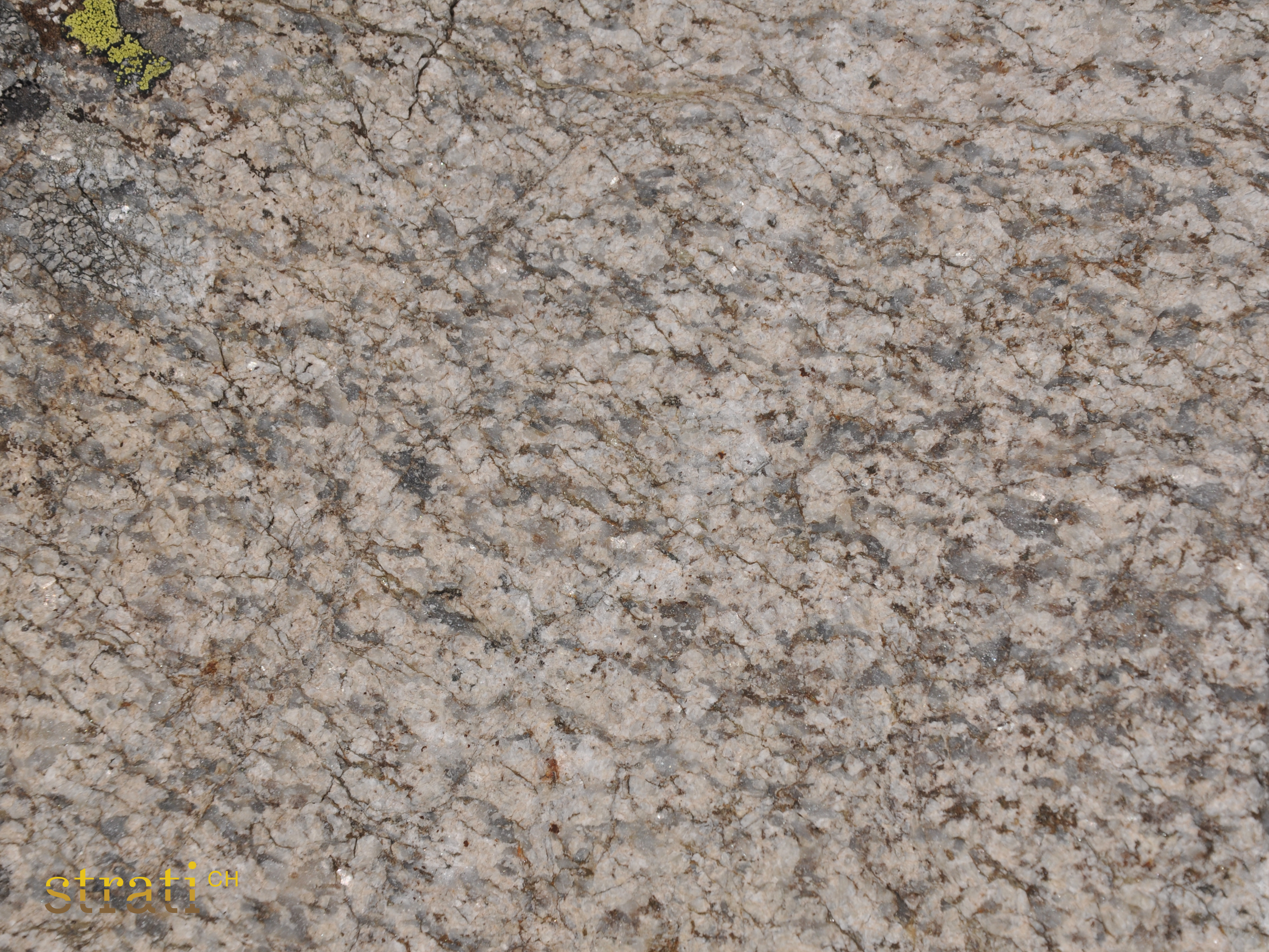Südwestlicher Aare-Granit
Torna a Massiccio dell'AarRappresentazione e statuto
- Index
- gamma-SWA
- Colore CMYK
- (0%,43%,52%,14%)
- Colore RGB
- R: 220 G: 125 B: 105
- Rango
- Formazione litostratigrafica
- Uso
- Unità in uso.
- Status
- termine scorretto (informale)
Nomenclatura
- Deutsch
- Südwestlicher Aare-Granit
- Français
- Granite sud-occidental de l'Aar
- Italiano
- Granito sudoccidentale dell'Aare
- English
- Southwestern Aar Granite
- Varianti storiche
-
Südlicher Aaregranit p.p., Südlicher Aare-Granit in Westen, Southern Aar Granite p.p. (von Raumer et al. 1993a), Südlicher Aaregranit (Labhart 2007), Südlicher Aare-Granit der Grimselregion (Labhart & Renner 2012), Southwestern Aar Granite (Berger et al. 2017), Southwestern Aar granite (Ruiz et al. 2022)
- Nota sul nome
-
Vorschlag: Märjelen (VS)?
Gerarchia e successione
- Unità di rango superiore
Età
- Geomorfologia
-
- Primo Permiano
- Età alla base
-
- Primo Permiano
- Metodo di datazione
-
Ca. 296.1 Ma (Schaltegger, unpubl.)
Geografia
- Estensione geografica
- Obergomsgebiet. Letzte Ausläufer treten bei Belvédère vor (Labhart & Renner 2012).
Paleogeografia e tettonica
-
- Rocce plutoniche variscane dell'Elvetico
- Termini generici
- Tipo di origine
-
- plutonica
- Metamorfismo
- monociclico
Referenze
- Definizione
-
(2017) :
Geological Map of the Aar Massif, Tavetsch and Gotthard Nappes. Geological Special Map 1:100'000, Explanatory Notes 129
p.50: Unfortunately, two distinct intrusive bodies are mentioned in the literature with the same name: “Southern Aar Granite” (Stalder 1964, Labhart 1965, Steck 1966, Spillmann et al. 2011). These two bodies outcrop, without exposed connection, in two different areas and most probably also have different intrusion ages. For some time, the western one was even simply reported as Central Aar Granite (Labhart 1977). For the sake of clarity, these two bodies were considered as individual intrusions with two different names: the body outcropping in the Obergoms area south of the Grimselpass was named Southwestern Aar Granite and the one in the Tavetsch area Strem Granite.
The Southwestern Aar Granite is separated from the Central Aar Granite by a band of polycyclic metamorphic basement rocks (Stalder 1964). This intercalation consists of the Bäregg Gneiss Complex (Oberaar-Furka Zone). The structural, petrographic and geochemical characteristics indicate a strong relation to the Central Aar Granite (Stalder 1964, Schaltegger 1989, 1990a). The intensity of deformation varies and is locally quite strong (Wehrens 2015, Wehrens et al. 2017). The Southwestern Aar Granite is undated, but in the light of its close affinity with the Central Aar Granite it was assigned to the Haslital Group.


